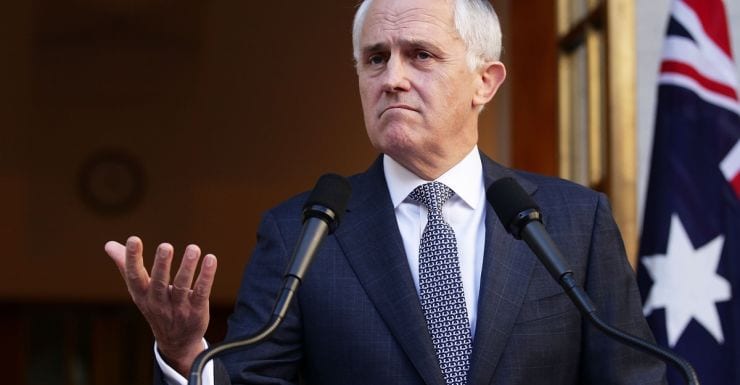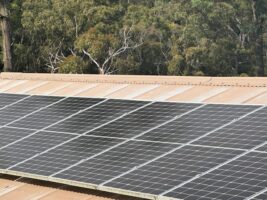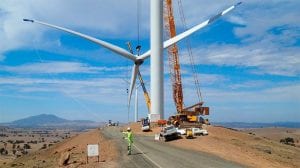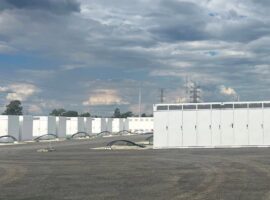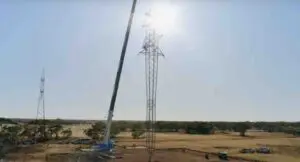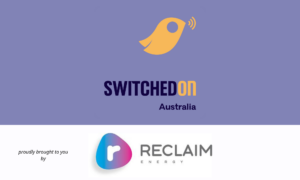
In the midst of an election we expect politicians to announce things that are likely to be popular with the public, particularly in marginal electorates. However, it is possible to announce good policy that is also popular. Unfortunately, this is not the road the Coalition is currently taking with renewables policy.
Recent polling shows that 63% of Australians are likely to vote for parties supporting renewable energy. As such, it isn’t surprising that the Coalition is trying to tap into this popularity. Recently, the Coalition announced its $5 million Solar Communities Program, with a pre-selection of recipient community groups being announced and interestingly, so far only in the marginal seats they stand to lose in Queensland – Bonner, Petrie, Brisbane, Forde and Fisher (as well as Bass in Tasmania and Mayo SA).
This announcement is problematic for two reasons. Firstly, the Coalition Government has spent the better part of the last three years trying to destroy the renewable energy sector – in particular the Clean Energy Finance Corporation and the Renewable Energy Target. They have also slashed funding for the Australian Renewable Energy Agency to the tune of over $1b. They have now returned $5m of it, but $995m in support for renewable energy is still missing and no new larger renewables or climate policy has been announced this election.
Secondly, by branding their announcement “community solar” the Coalition is tapping into the hard work of over 70 community energy groups developing innovative local clean energy initiatives, without doing anything to support these groups. Done well, strong community renewable energy policy will provide not just low carbon energy, but local economic benefits and jobs for local communities. If the Coalition were serious – they would initiate a program much smarter than just granting one-off small amounts of money to install solar on community organisations in marginal seats.
Communities are already installing solar on the roofs of community organisations without government help, examples include:
- CORENA has set-up a revolving zero-interest loan fund for the installation of solar, batteries and energy efficiency for community organisations. Eleven projects have already been completed.
- Clean Energy For Eternity has installed solar on 18 surf-lifesaving clubs on the South Coast of NSW.
- At least 15 other community energy groups such as Repower Shoalhaven have completed or are fundraising to put solar on the roof of community organisations in their community. Find groups near you through the Community Power Agency or Embark.
Community renewable energy is now a part of every forward looking energy policy from local to federal levels of government. Federal Labor has committed $98.7m to it, including establishing 10 community powerhouses. The Greens have had a Community Energy policy for several years and are committing $265.2 million, including $150 million to fund 50 community energy powerhouses. Profits created for the community investors will be tax free, thereby offering full support to communities, and funded through scrapping fossil fuel subsidies. Even the NSW LNP government have seen the value in supporting community energy through its Growing Community Energy grant program.
To be clear, community renewable energy is where communities themselves raise the funds, thereby providing up front capital for renewable energy installations (be it solar, wind, biodigesters or storage) on the rooves, paddocks or storage sheds of nearby businesses, not-for-profits or the local council. The host site then refinances the loan or pays for electricity through often cheaper electricity bills. The community investors get a return on investment, so profits stay in the community. It’s a win-win-win for the environment, the local community and the local economy.
Greg Hunt and local candidates particularly in marginal seats need to understand what community renewable energy actually looks like. Community renewable energy groups throughout Australia want to build and run their own clean energy projects and Queensland is one of the more difficult States to get projects off the ground. Community Energy groups, such as Energetic Communities and Community Solar Sunshine Coast are getting tangled up in red tape with no help in negotiating the legal, financial and technical hurdles in their way. Greg Hunt’s policies do nothing to address the real barriers.
Imagine how your community could benefit from driving community energy, providing we had strong policy supporting those communities wanting to take the lead in a just transition to a sustainable future. Support for renewable energy will lead to more jobs than in coal and community energy leads to greater local economic benefit than traditional renewable developments. With the painfully inane “jobs and growth” mantra, it’s time to grow renewable energy jobs in the coal affected communities, mostly in regional areas where jobs are being lost. That is what innovation and listening to the community looks like.
Luke Reade is the President of Energetic Communities Association Inc., a key driver of Community Owned Renewable Energy in Queensland. Working and liaising with other community energy groups and all levels of governments to promote energy policy that supports communities in a just transition, they aim to put community energy on the roofs of community buildings, businesses and not for profits, as part of a drive to a more sustainable society.

